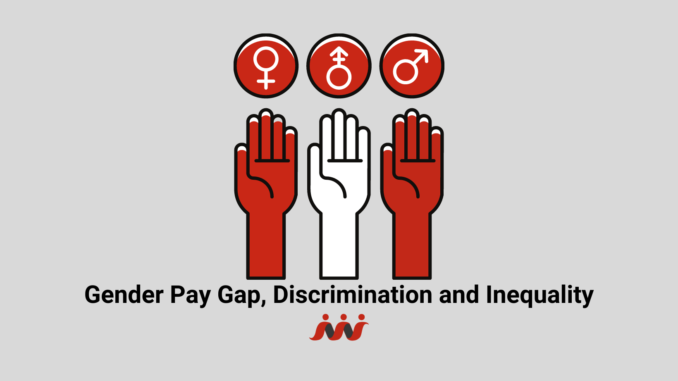
*Trigger Warning: Gender Discrimination, Gender Inequality*
The UK has a tendency to sugarcoat the reality of our societal structure. Many would argue that gender discrimination and inequality is something of the past, a history that we have been able to overcome through political, legal, economic and social change. Although there have been major changes within the UK, the harsh truth is that gender discrimination and inequality remains in this country today.
In April 2019 the gender pay gap was 9%*
In April 2020 the gender pay gap was 7.0%*
In April 2020 the gender pay gap was 7.9%*
*For full-time employees within the UK
The Office for National Statistics (ONS) released the statistical bulletin ‘Gender pay gap in the UK: 2021’ in October of last year. This document analysed differences in pay between women and men by age, region, full-time and part-time, and occupation.
The overall downward trend of the gender pay gap is promising. Additionally, the pay gap has fallen by approximately a quarter among full-time and part-time workers in the last decade. However, the following statistics were also noted in this document:
- There remains a large difference in the gender pay gap between employees aged over 40
- Higher earners experience a much larger difference in hourly pay compared to lower-paid earners
- Around 42% of females work part-time compared to 15% of males
So this raises the question, why do more females work part-time than males? We must look at historical evidence to explain why this may be the case.
In 1978, Nollen and Martin stated that choosing part-time employment ‘may contribute to the quality and dignity of working life’ and allow workers to ‘accommodate personal and family needs (Nollen, Martin. 1978). Ideally, females and males would work together and equally utilise part-time work. However, the reality is that the sexual division of labour is the old-fashioned belief that males should be the main breadwinner and females should act as the ‘housewife’ (Scott, Marshall. 2009). The ‘separate spheres’ ideology means that males were expected to single-handedly support the family financially, which became more difficult to achieve as the supply of household commodities increased.
There are thousands of examples we could mention to prove the existence of gender inequality and discrimination in the present day. In response to the initial focus of this text, the prevalence of gender inequality and discrimination is the reason why the gender pay gap is still in existence at this time.
So what can we do to reduce gender inequality and discrimination in the UK, and how will this have a knock-on effect in reducing the gender pay gap?
Ultimately, by reducing gender inequality and discrimination, the gender pay gap should reduce also.
Why not attend CMI’s FREE ‘Educate and Empower: Addressing the Gender Pay Gap’ online event?
This is taking place on 26th January 2022, at 18:00-19:00 GMT.
Follow the link below to check out this event:
Written by: Amelia Banks – Social Media and Content Creation
Edited by: Carlene Fenton – CEO, Zoe Langhorn – Social Media and Business Development

Be the first to comment